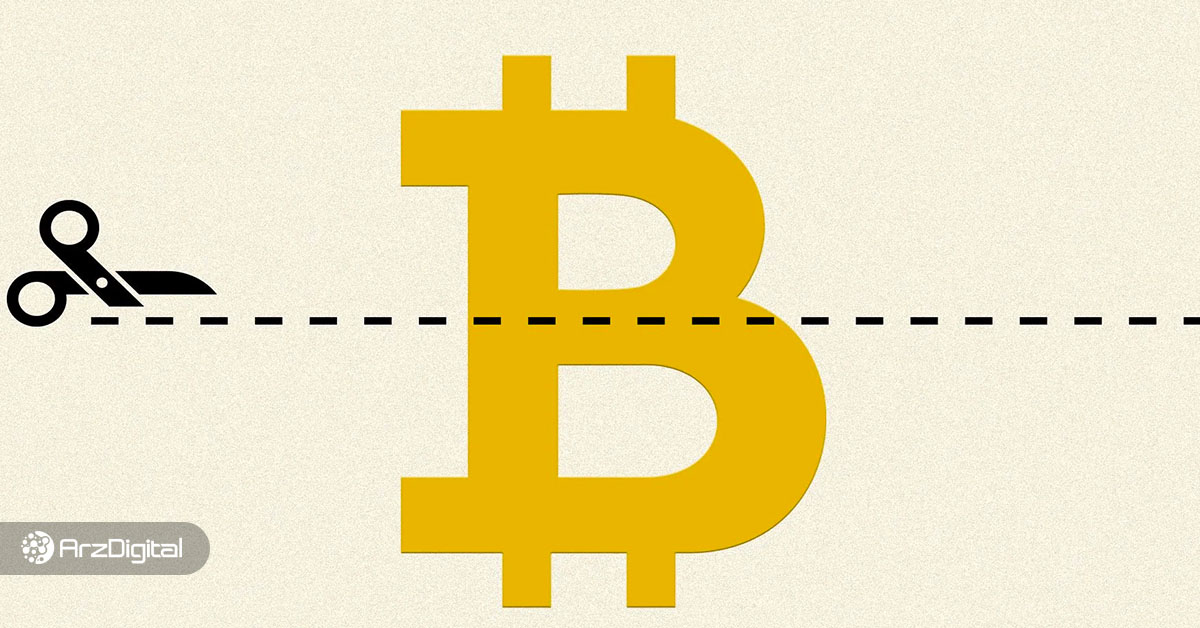launch Bitcoin exchange-traded funds (ETFs). by institutions this year, the price of this digital currency has reached its highest level. However, the question arises whether the Bitcoin halving has already had an effect on the price or the upward trend will just start after the halving; An event that will take place in less than an hour from the time of publication of this report.
The Bitcoin halving event that will take place in the next few hours could be equal in importance to the first halving that happened about 12 years ago. However, despite the great excitement and interest in this event, evidence shows that its impact on Bitcoin priceit will be milder compared to the previous halvings. Launching new protocols such as Ordinals, as well as increasing the strength and dynamism of the mining sector, are among the factors that can bring this moderating effect.
Read more: Bitcoin price prediction after 2024 halving
The Bitcoin halving event that takes place today is accompanied by many expectations and hopes. In all the previous halvings, we have seen a significant price increase in the entire Bitcoin market. Currently, there is a hot debate about whether halving is factored into the current price of Bitcoin, or whether the reduction in the production rate of Bitcoin (from about 900 Bitcoins per day to 450 Bitcoins) will create a supply shock. That would increase prices (assuming demand for Bitcoin stays the same or increases).
There are two opposing economic views on the impact of Bitcoin halving on its price:
- Proponents of the efficient market theory believe that halving is included in the current price of Bitcoin, and after that there will be no more effect of halving on the price. They argue that since the event is already known and the information is publicly available, it is impossible for Bitcoin to be priced below its true value right now.
- On the other hand, another group believes that halving can have a significant impact on the price of Bitcoin, referring to the four-year historical boom and bust cycles in the digital currency market, as well as supply and demand limitations.
The upcoming Bitcoin halving event is different from previous halvings for several reasons. For the first time in the history of Bitcoin, we see an increase in the price of this digital currency before the halving. This phenomenon is largely due to the launch of nearly 12 bitcoin exchange-traded funds in the United States, which are attracting bitcoin at an unprecedented rate. As a prominent example, BlackRock’s Bitcoin fund is among the top 5 funds that have seen the most capital inflows this year, reflecting the growing demand for Bitcoin from institutional investors. Although there are two opposing economic theories regarding the impact of the halving on the price of Bitcoin, this event certainly has the potential to create significant changes in the market.
Miles SuterBitcoin Product Manager at Cash Appbelieves that since 2020, the Bitcoin industry has taken great steps to increase the accessibility and ease of use of this digital currency, he said in an email to CoinDesk:
Although progress has been made, much remains to be done.
Suter went on to note that the recent rally in Bitcoin’s price has been largely driven by institutional investors. However, he believes that previous Bitcoin halvings have seen a positive shift in market sentiment that has attracted new retail traders. He predicts that this cycle will be repeated in the upcoming halving.
What is different about this hawing? Big Wall Street companies
In previous years, the biggest buyers of Bitcoin were Michael Saylor’s relatively unknown software company MicroStrategy, Jack Dorsey’s Block, a well-known Bitcoin fan, and Elon Musk’s Tesla. Of course, due to environmental concerns, he withdrew part of his commitment.
Exchange traded funds changed this situation forever. That’s not to say Wall Street doesn’t have its critics, but it’s notable that companies like BlackRock, Fidelity, Franklin Templeton, VanEck, and WisdomTree were all trying to be the first. Be a company that offers a traditional path to this emerging digital economy. Once considered a scam, Bitcoin is becoming the norm, and no one is quite sure what’s on the other side.
Lane Rettig, founder of SpaceMesh and former Ethereum developer, said in a statement:
Individuals, organizations, and governments that matter in the macro picture are just beginning to become aware of Bitcoin. Yes, this process takes a long and painful time, beyond what we expect or what we love, like the gradual awakening of a dragon that has just begun to stir.
Nelson Rosario of the law firm Rosario Tech Law reiterated that he sees halving as merely a stimulus to draw attention to Bitcoin.
I think the questions I’ve seen about this halving are somewhat missing the point. The reality is that Bitcoin is at unprecedented levels. This is semi-regular news in the financial press, and yet we are still years away from general acceptance.
Macroeconomic factors
In fact, analysts at JPMorgan and Goldman Sachs also published reports this week that dampened the excitement of new buyers coming in due to the halving. JPMorgan analysts Reginald Smith and Charles Pearce wrote that the pre-halving market boom may have been a way to generate excitement, but it may also have pushed forward part of the usual post-halving rally.
More importantly, macroeconomic conditions in 2024 will be quite different from the past decade of low interest rates and low inflation. Goldman Sachs’ fixed income, currency and commodity teams, as well as equities, wrote that higher interest rates these days may make risky investments like cryptocurrencies less attractive.
Bitcoin’s performance this week reinforces this point; Because following the news of the Federal Reserve’s policy change from lowering interest rates (which could inject liquidity into the economy), the price of Bitcoin fell. The price forecasts of market analysts are very different. Some say the price of Bitcoin may drop as low as $40,000 after the halving, while others predict it will rise above $150,000 by the end of the year.
An anonymous trader called Poordart fueled the idea that Bitcoin’s price might drop after the halving with a “primitive calculation”. He told CoinDesk:
If we assume that eventually all mined bitcoins are sold by miners, the drop in average daily mined bitcoins from 900 to 450 (at current prices from $54 million to $27 million) should have an impact, ie 189 million weekly. Fewer liquidity dollars are needed simply to maintain price stability.
The 50% increase in the price of Bitcoin this year seems to indicate people’s willingness to take risks, although this does not mean that traders need to be cautious. In part, the significance of this halving has become even more ambiguous than ever due to institutionalization and macroeconomic trends. Some worry that halving will distract from Bitcoin’s core mission.
Nathan Schneider, professor of media studies at the University of Colorado Boulder and author of Governable Spaces: Democratic Design for Online Life, says:
It is strange that we have to treat man-made events as natural phenomena or the work of God. I look forward to the day when native grid economies are designed for human flourishing, not arbitrary parameters embedded in that grid’s code.
Others, such as Sarah Meyohas, creator of Beach Coin and more recent engraving and hologram collections Satoshi Nakamoto Bitcoin halving is seen as a sign of its persistence. He says:
As we approach the Bitcoin halving, I am struck by the idea of how a few people can shape the future of a generation with just their ideas.
How will halving affect bitcoin miners??
A combination of factors, including the halving of the reward for mining each block, higher fees, investor caution and a more competitive mining sector could make for a harsh reality for Bitcoin miners after the halving, as it increases competition to find the next block.
Historically, halving has boosted the price of Bitcoin and helped miners earn good margins. This time, however, the situation is different, as Bitcoin miners, both public and private companies, will have to work harder not only to mine the next block, but also to convince investors and the markets.
Ahead of this halving, miners are facing a cautious tone from investors. For example, the share prices of mining companies such as Marathon Digital, Hut 8 and Riot Platforms have decreased by 33%, 35% and 46% respectively this year. The risk associated with Bitcoin mining is considered higher compared to the main alternative ways to enter the cryptocurrency world, including Bitcoin-based exchange-traded funds, stocks like Coinbase (COIN) and the broader CoinDesk 20 Index, which are less volatile. .
For miners to survive and thrive after this halving, Ki Young Ju, CEO of CryptoQuant, says they need to be efficient, generate cash flow and have proper treasury management. He predicts that even if the price of Bitcoin remains at $60,000, many companies will no longer be able to make a profit with the current generation of mining machines, leading to a wave of bankruptcies.
If companies can’t quickly adopt the new generation of higher-performance machines, Joe says the price of Bitcoin will need to reach around $80,000 to mine with Bitmain’s S19 XP mining machines, which are the most common machines used by US companies. Miners remain profitable.
Miners are already starting to replace their old machines with new ASIC devices. However, having the latest technology may not be enough to satisfy investors. Miners must prove they can be profitable by using capital efficiently, cutting costs, finding cheaper sources of energy and generating positive cash flow for shareholders.
A sinister and dark destiny?
For profitable companies, the post-Bitcoin halving landscape may turn into a season of mergers and acquisitions. Companies like Galaxy Digital, with its Helios mining farm, the largest liquid-cooled mine in the Northeast, are buying low-efficiency machines as cheap electricity in West Texas makes old chips profitable.
Of course, not everything is bad. Transaction fees are increasingly becoming a significant source of income for miners. In the past, miners’ main profit was from the reward for mining each block. But with the increase in ways to use the Bitcoin blockchain, especially with the emergence of the Ordinal protocol, miners’ income from transaction fees has also increased.
Another option that some miners have included in their business plans is to diversify revenue sources, such as repurposing existing data centers to host computing resources for artificial intelligence or cloud computing.
While some see the drop in income for miners as a potential threat to their survival, some experts believe that the effects will be relatively limited compared to previous years. Some, like Colin Harper, researcher and author of Luxor Technology’s Hashrate Index, think that this year may be the first year that there is no noticeable drop in Bitcoin’s hashrate due to the price of Bitcoin remaining high. or the amount of energy devoted to network security, does not occur. Colin Harper told CoinDesk:
Mining profit margins after halving obviously won’t be as good as they are now, but they won’t be terrible either. And if the new Runes fungible token protocol has a significant impact on transaction fees, profit margins will be healthy enough to keep higher-cost miners online for longer.
Launch runes
As mentioned, NFT-like tokens made possible by the launch of the Ordinals protocol have changed the rules of the Bitcoin game. Not only has this changed the economic landscape for miners, but it has also renewed developer excitement for the first digital currency, which has been lagging behind blockchains like Ethereum and Solana in recent years.
This halving will also see the launch of the Runes Protocol, created by the creator of the Ordinals, Casey Rodarmor. The system, which allows tokens to be created, multiplied and transferred in Bitcoin, is set to launch immediately after the halving with the goal of introducing more utility to Bitcoin, a mission that began with Rudarmour’s previous creation, Ordinals.
Rodermore has described Runes as creating a place for memecoins in Bitcoin, only with more simplicity and efficiency than what is currently offered by the BRC-20 token standard. Currently, several Runes projects are planned to coincide with the launch of the new protocol.
Network security
Although in previous years, halvings did not lead to an economic attack on Bitcoin (such as the 51% attack), there is some concern that the lower profitability could lead to the shutdown of many miners, which theoretically makes this attack possible. For example, Bitcoin’s hashrate decreased by 15% after the 2020 halving, 5% after the 2016 halving, and 13% after the 2012 halving, thus making Bitcoin less secure.
Peter Todd, a well-known Bitcoin developer, told CoinDesk:
Halving is one of the craziest parts of Bitcoin’s design. If you are going to reduce the subsidy over time, the right way to do it is gradually, not by shocking the system every four years. Fortunately, fees are increasing, so the risk of halvings is decreasing. I hope this one goes well.
Rudarmor and others see Ron as important to the post-halving Bitcoin ecosystem because it can create more demand for block space, thereby boosting the economics of mining. However, higher fees for validating transactions can help offset the decline in block reward revenue and keep the hashrate at a higher level. Rodarmore told CoinDesk:
I don’t recommend changing the halving schedule, but if I were to design Bitcoin from scratch, I probably wouldn’t have chosen the rapid decay that was chosen. But you don’t go to war with the army you want, you go to war with the army you have, and that’s Bitcoin we have.
Ordinals have been controversial among some members of the Bitcoin community for causing network congestion and increasing user fees, something Runes is likely to face if successful. Rudarmor said:
I don’t think it is the best and highest use of Bitcoin Runes; I think Bitcoin itself is neutral as a money delivery network. However, I think creating demand-side resources for Bitcoin transactions is good because it ultimately helps secure the network.
If all goes well, it may not matter whether the Bitcoin price is included in the halving or not.
RCO NEWS

















